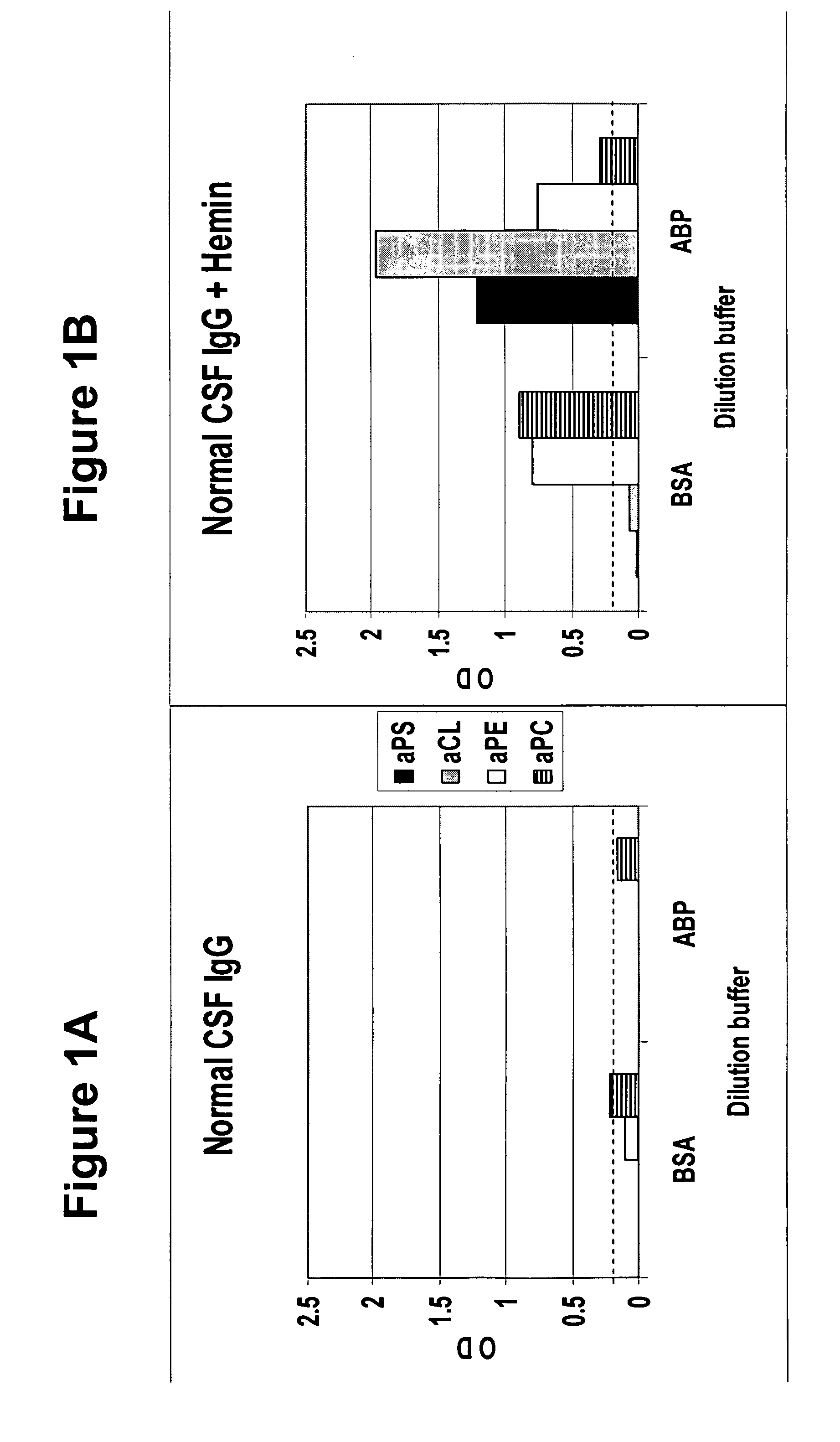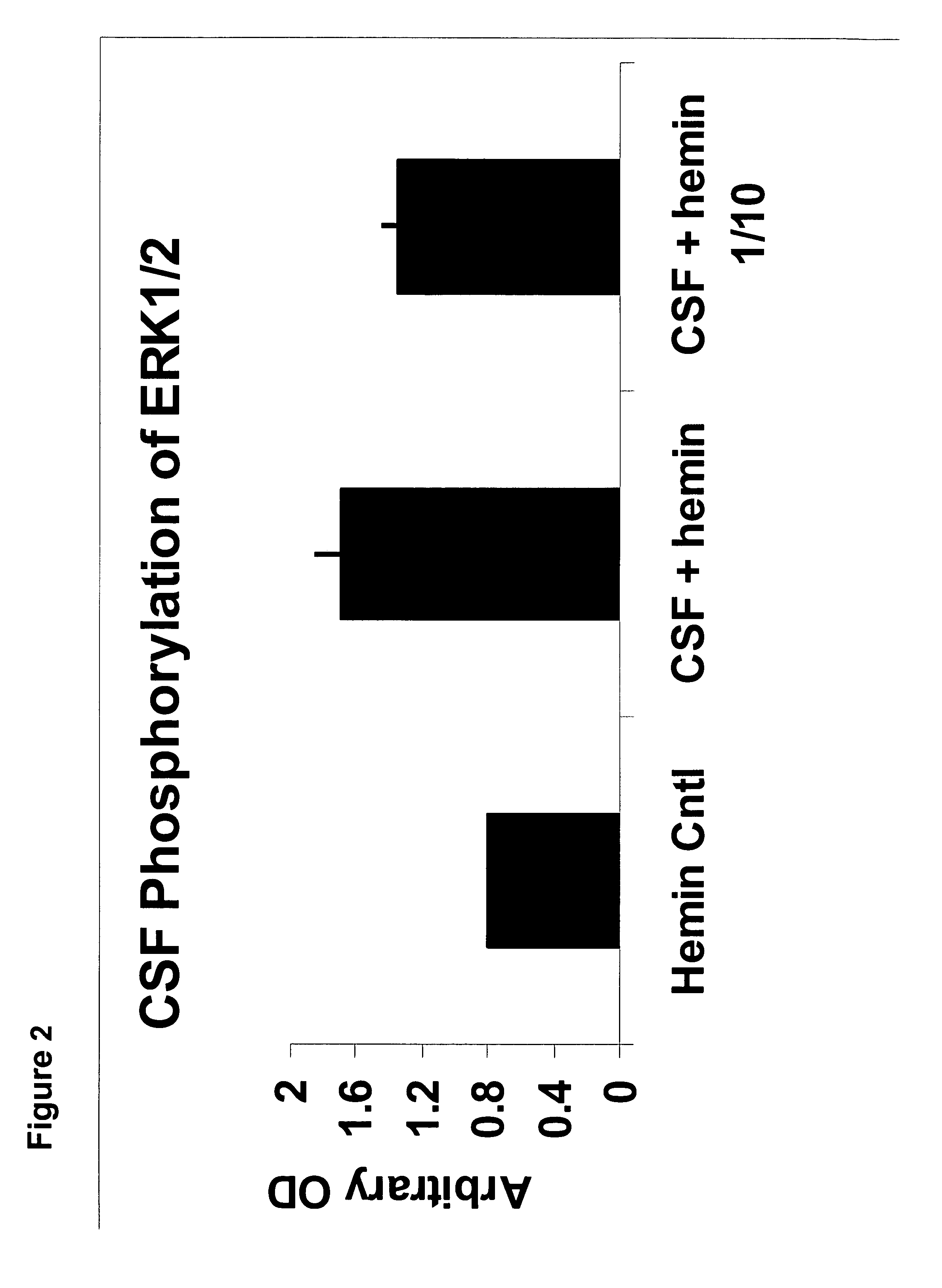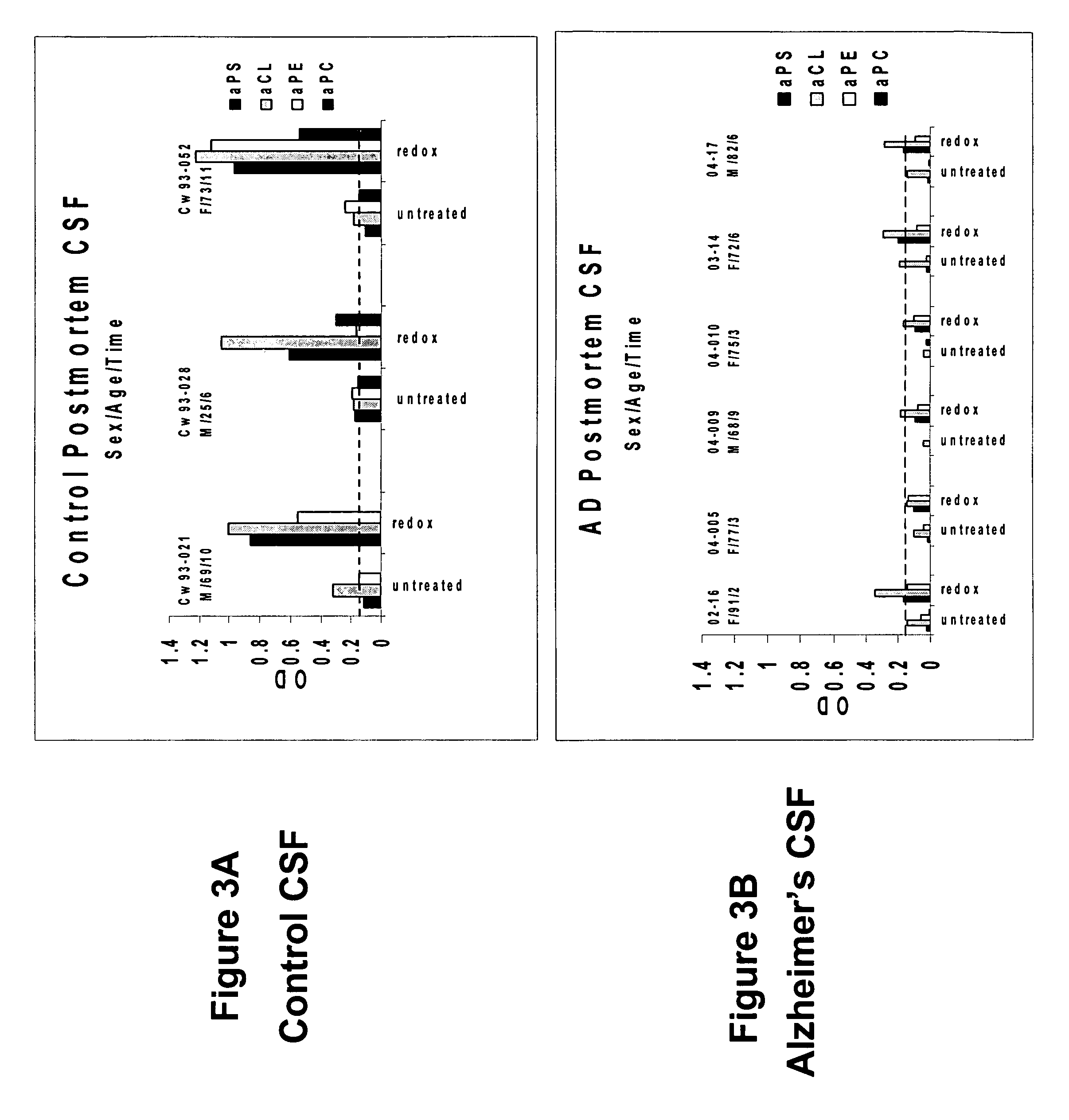Method of detecting or diagnosing of a neurodegenerative disease or condition
a neurodegenerative disease and neurodegeneration technology, applied in the field of methods of detecting or diagnosing a neurodegenerative disease or condition, can solve the problems of autoantibodies causing damage, and affecting the detection or diagnosis of neurodegenerative diseases
- Summary
- Abstract
- Description
- Claims
- Application Information
AI Technical Summary
Benefits of technology
Problems solved by technology
Method used
Image
Examples
example 1
To determine whether human cerebral spinal fluid from a normal subject contains masked autoantibodies, spinal fluid was taken by spinal tap from a normal individual and samples in BSA and ABP dilution buffers were assayed by ELISA for aPS, aCL, aPE and aPC levels before and after oxidation treatment with hemin. As shown in FIGS. 1A and 1B, samples showed none or minimal levels of antiphospholipid antibodies before oxidation treatment (FIG. 1A), and substantial increases in the levels after oxidation treatment (FIG. 1B), with aPE and aPC showing the highest levels in a BSA buffer and aPS and aCL showing the highest levels in the ABP buffer.
example 2
The presence of autoantibodies sensitive to oxidation-reduction reactions in normal cerebral spinal fluid samples and their absence in Alzheimer's disease patients' spinal fluid is remarkable, albeit it does not imply that these autoantibodies are functional and / or pathogenic. To test for functional activity, the cerebral spinal fluid samples containing redox-reactive autoantibodies were tested in a mouse model synaptosome assay. Cerebral spinal fluid samples were incubated for 10 minutes on the synaptosomes followed by lysing of the cells and probing for phosphorylation activity by Western blots. FIG. 2 is a histogram showing redox-reactive autoantibody ERK1 / 2 phosphorylation activity of a hemin buffer control, a hemin treated cerebral spinal fluid and a 1 / 10 dilution of the same hemin-treated cerebral spinal fluid.
The redox-reactive autoantibodies significantly increased the phosphorylation of the members of the MAPK cascade of signal transduction molecules, thus giving these anti...
example 3
To determine whether human cerebral spinal fluid from a subject having Alzheimer's disease contains an elevated level of unmasked or active phospholipid autoantibodies, spinal fluid was taken post mortem from six patients diagnosed with Alzheimer's disease based on biopsy confirmation. Samples of cerebral spinal fluid in BSA and ABP dilution buffers were assayed for aPL levels. As shown in FIGS. 3A and 3B, samples from Alzheimer's patients (FIG. 3B) showed a decreased level or absence of aPL in comparison with the post mortem controls level (FIG. 3A) subsequent to oxidation with hemin. This indicates that oxidation-related autoantibodies have been unmasked and bound to their neuronal targets, a process shown to cause modifications in the normal synaptic mechanisms brain cells that can lead to dementia.
PUM
| Property | Measurement | Unit |
|---|---|---|
| temperatures | aaaaa | aaaaa |
| electromotive force | aaaaa | aaaaa |
| physical or cognitive symptoms | aaaaa | aaaaa |
Abstract
Description
Claims
Application Information
 Login to View More
Login to View More - R&D
- Intellectual Property
- Life Sciences
- Materials
- Tech Scout
- Unparalleled Data Quality
- Higher Quality Content
- 60% Fewer Hallucinations
Browse by: Latest US Patents, China's latest patents, Technical Efficacy Thesaurus, Application Domain, Technology Topic, Popular Technical Reports.
© 2025 PatSnap. All rights reserved.Legal|Privacy policy|Modern Slavery Act Transparency Statement|Sitemap|About US| Contact US: help@patsnap.com



